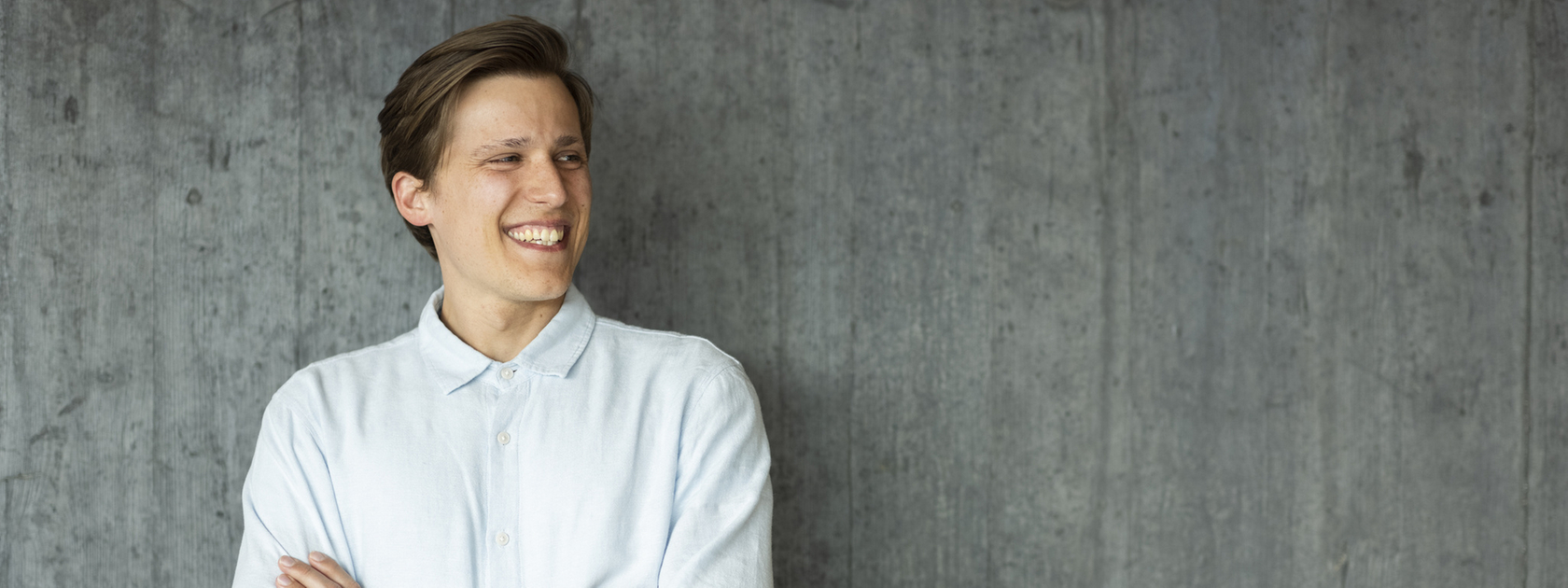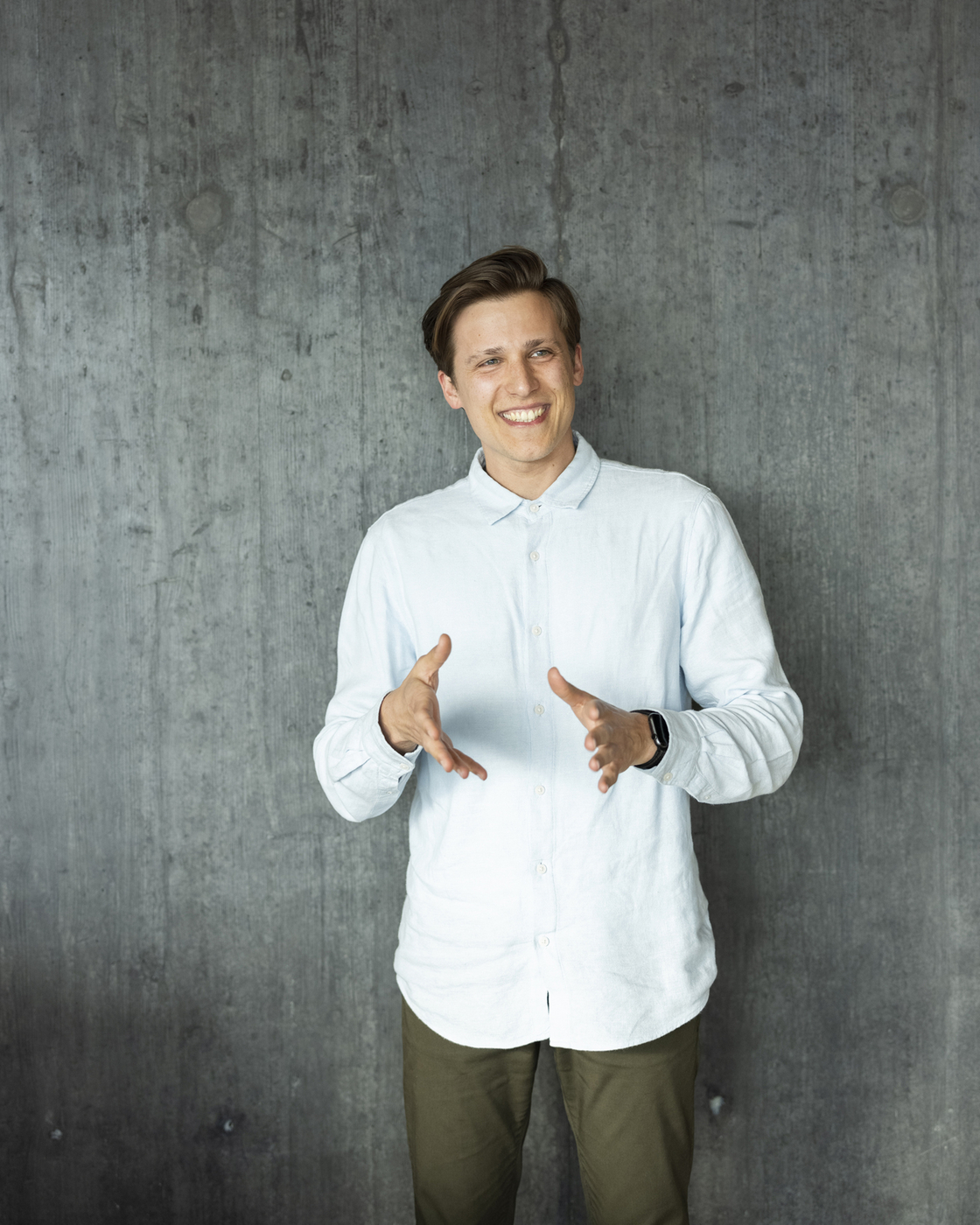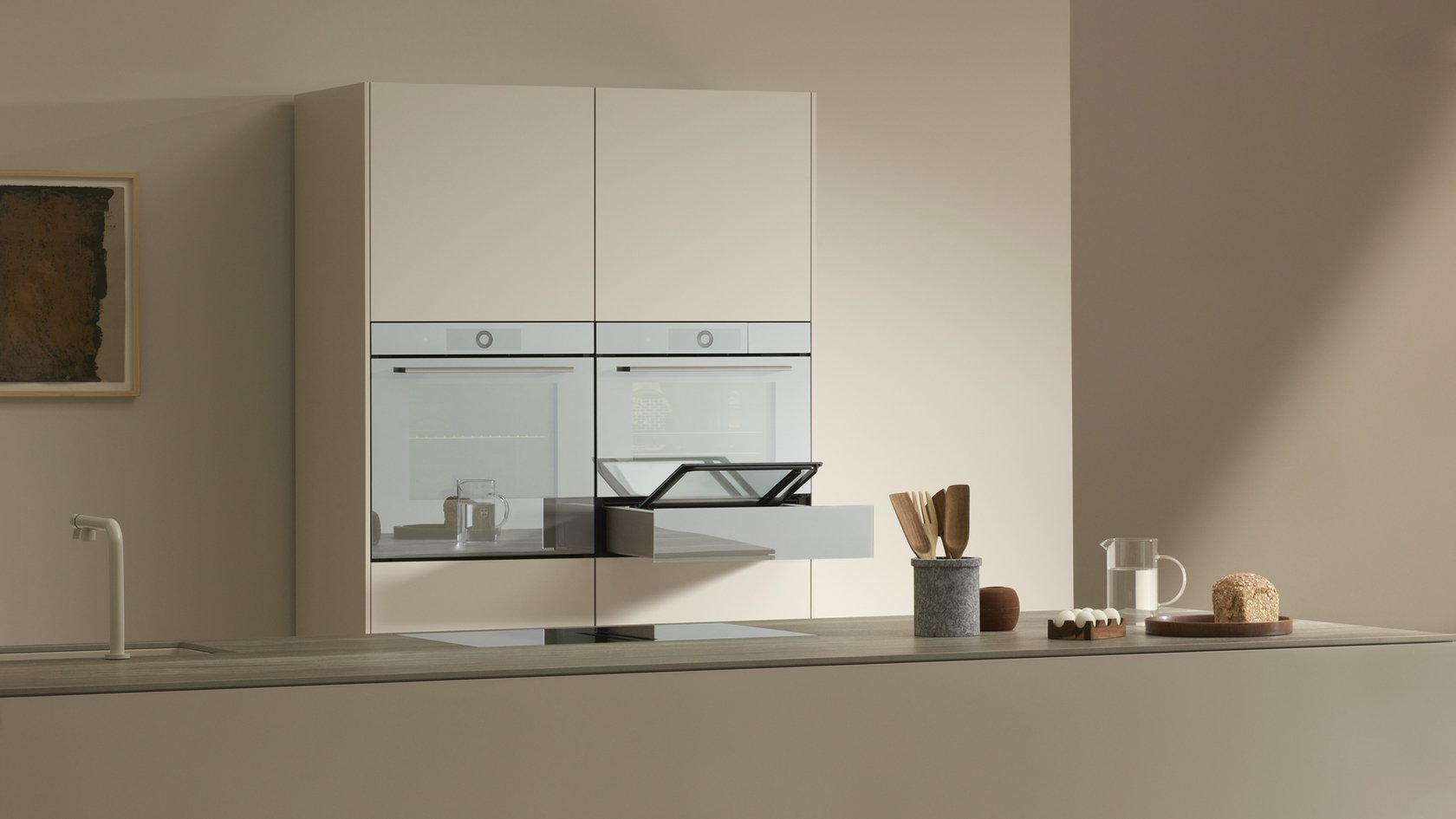An aesthetically pleasing and tactile solution
After the abstract concept phase comes the visual design. The content is applied to the graphical user interface, where digital interaction takes place. In the Excellence Line, this is the large touchscreen display with its revolutionary CircleSlider. An aesthetically pleasing and tactile solution which is perfect for accommodating the wide variety of applications. The user can intuitively navigate, scroll, touch, swipe, and choose between an app or list view. The V‑ZUG design team also experimented with visuals for a long time and created an iconic design for a user experience that inspires positive emotions. “I have no idea how many kilograms of food we fetched and photographed to ensure we had only the best background images”, laughs Kevin Perlinger.
It's the small things that are the most fun
He studied Visual Communication at Pforzheim University of Applied Sciences and later completed his Master's in Interaction Design in Zurich. He enjoys the mix of design, psychology, research and programming, having previously taught himself how to program. “I'm always looking for something that inspires me, where I can feed my creative energy.” He cannot simply do nothing. So sport, such as running and riding racing bicycles, are always part of his daily routine. He has also introduced self-made robotic devices into his home: the apartment he shares with his girlfriend in Zurich Seebach features automatic door openers and a plant watering system. “It's the small things that are the most fun”, laughs the man with versatile interests.
Kevin Perlinger's personal passion also involves technology – temperature, quantity and humidity. And at the moment, something is tucked away in a cupboard with an evaporator and a heater – he enjoys fermenting. Years ago in Switzerland, he missed the flavour of really good, dark rustic sourdough bread. He started with sourdough, but his current favourite fermented products are tempeh and miso. It was a strand of fungus that developed an aroma similar to a basket of tropical fruit that piqued his interest. The fascinating thing about fermenting is that it creates something unique that cannot be ordered or bought. And this opens up a whole new culinary world to see, smell and enjoy.


